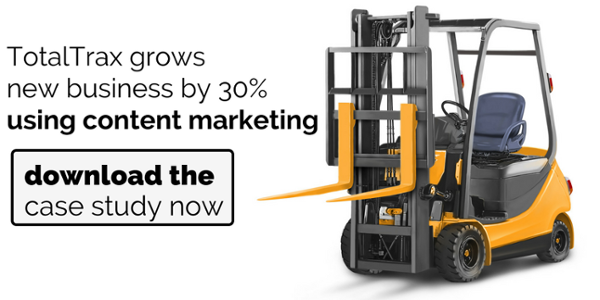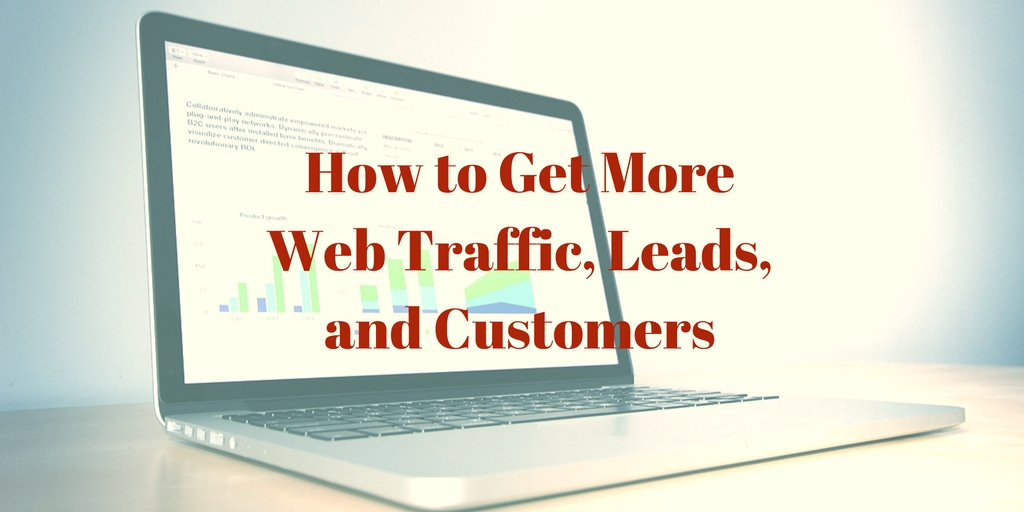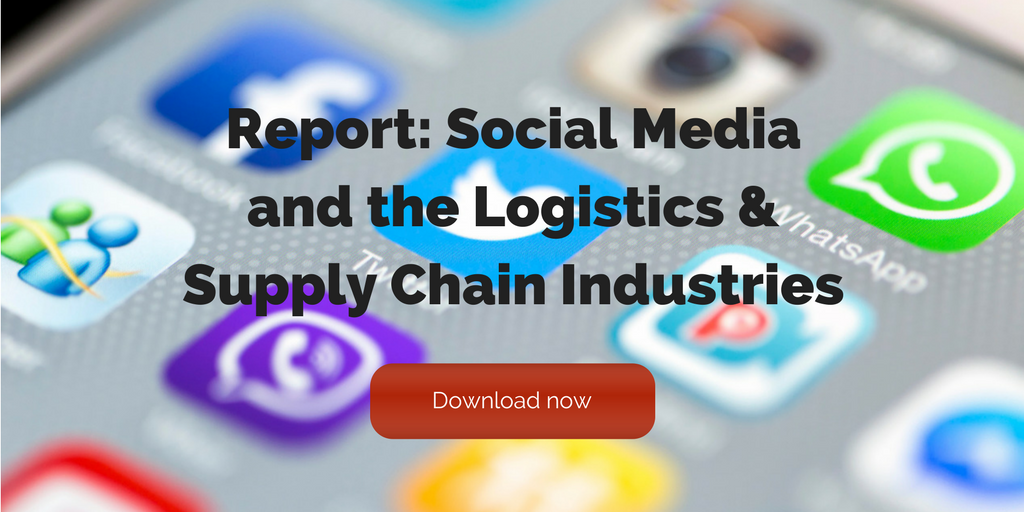
by Fronetics | Nov 14, 2016 | Blog, Content Marketing, Logistics, Manufacturing & Distribution, Marketing, Social Media, Supply Chain, Transportation & Trucking, Warehousing & Materials Handling
Fronetics is conducting a survey to determine the benefits and challenges of social media for companies in these industries.
Two years ago, Fronetics surveyed a number of individuals working in the logistics and supply chain industries, including those employed by manufacturing, warehousing, and transportation companies. The survey’s goal was to find out how these companies were using social media, and if they were realizing any benefits or encountering any challenges by participating.
Interestingly, 100% of respondents reported having used social media for 5 years or less. Despite this relatively short implementation period, the majority (68%) said that their companies had already realized benefits from participation — primarily increased engagement with customers, increased market intelligence, and increased business intelligence.
As things go in the technology space these days, social media looks quite different than it did two years ago. What’s more, companies in these industries have, presumably, been using these tools for longer. Have a better understanding of social platforms and more opportunities for businesses impacted the benefit to users?
Fronentics is conducting a new survey to find out. We invite individuals working in the warehousing, manufacturing, and transportation industries — or those in other supply chain and logistics fields — to participate.
The survey takes about 3 minutes to complete. Responses will be reported in aggregate, and no identifiable information (individual or company) will be shared.
We look forward to hearing about your experience with social media!

Related posts:

by Fronetics | Nov 3, 2016 | Blog, Content Marketing, Marketing, Social Media
The web search has changed the way businesses shop for products and services — and content marketing is your key to reaching them.
What’s the first thing we all do when we need a gift for Fathers’ Day, can’t think of a song lyric, or want to buy a new kitchen appliance? We Google it.
The world of B2B sales is no different. Demand Gen’s 2016 B2B Buyer’s Survey Report found that 62% of B2B buyers say that a web search was one of the first three resources they use to learn about a solution. In fact, 94% of buyers reported using online research at some point in the purchasing process.
That means businesses must be more than just conscious of their digital presence: They must actively manage their website and digital content assets to accommodate the ways buyers are conducting research.
Seeing opportunity in the new reality
In the pre-internet age, the salesperson’s role began relatively early in the buyer’s journey. Today’s average B2B buyer, however, progresses nearly 60% of the way through this process before making any sort of contact with a sales rep. That means your prospects are forming their early opinions about your business and your products based on what they find on the web.
This new reality may seem daunting, given how much of the purchase decision-making process occurs before you have the opportunity to engage with a potential client. But in reality, this changing climate offers serious opportunities for businesses to demonstrate their expertise, without turning buyers off with overt sales pitches.
Content is king/key
To make the most of the potential purchaser’s experience with your business, content is key.
A robust content marketing strategy builds brand awareness, establishes trust and rapport with prospects, and generates traffic to your website. Thoughtfully generated and curated content catches the attention of buyers and keeps them interested in your business through the time of purchase.
Specifically, 67% more leads will be generated by companies with an active blog in 2016. And content isn’t limited to your website: a vibrant social media presence helps buyers conduct their research, with 57% of consumers reporting that they are influenced to think more highly of a business after seeing positive comments online.
Again, while this new reality may seem like a challenge, it’s actually a golden opportunity for your business to put its best foot forward with potential buyers. By thoughtfully generating and curating focused, informative content, companies can guide B2B buyers through the sales process, and develop an engaged and loyal customer base.
Related posts:


by Fronetics | Oct 13, 2016 | Blog, Content Marketing, Marketing, Social Media
Here’s a summary of what’s been happening on all of your favorite social media platforms lately.
Social media platforms change so frequently, it’s often hard to keep up. But, since social media is a crucial part of any effective content marketing strategy, it’s important to know what tools are available to your business and how you might gain value from using them.
That being said, we’ll be regularly summarizing any updates, changes, additions, or otherwise noteworthy goings-on in the social media world in this space. Feel free to send me an email if you want more information about any of these tools or if you’d like to see us cover something new in social media that we haven’t.
Facebook combats fake stories in Trending Topics
After letting its news curation staff go this summer, Facebook is working to find a solution to combat sensational news stories from creeping into its Trending news section, now run completely by algorithms. The company announced that it will implement a technology similar to that used by the news feed feature. Read more
Longer tweets come to Twitter
As of September 19, Twitter has changed the kind of content that counts toward the 140-character limit in tweets. Media attachments, quote tweets, and @names in replies no longer count toward the limit. Read more
Snapchat becomes Snap Inc., launches video sunglasses
In September, Snapchat launched a new line of business, video-enabled sunglasses (called Spectacles), and rebranded with a new corporate name, Snap Inc. CEO Evan Spiegel said in a blog post that the rebranding reflects the company’s diversification. Read more
Facebook launches Messenger Day to Poland, and it looks a lot like Snapchat
Facebook Messenger users in Poland, where Snapchat is not yet popular, can now share illustrated photos and videos that disappear within 24 hours. The platform says it often tests new features before rolling them out to other markets, but it is not yet clear if or when Messenger Day will come to the U.S. Read more
Twitter rolls out Moments to all members
Moments are a collection of tweets that focus on the same subject. Previously available only to specific partners, all members are now able to use this feature. Read more
Facebook enhances Canvas’ capabilities for brand advertising
New metrics, templates, and upcoming features like 360 videos are all ways Facebook is expanding the advertising feature’s utility for all businesses. Read more. Relatedly, brands can now create custom audiences based on users who have viewed their Canvas ads on Facebook. Read more
Pinterest launches Promote button
Brands can now promote their pins when creating it or when viewing it on their profiles with the new Promote button. Read more
Vimeo rolls out Vimeo Business
Video streaming platform Vimeo officially announced its business-focused membership option, Vimeo Business. The subscription includes unlimited bandwidth, analytics tools, and lead-generation mechanisms. Read more
Related posts:

by Fronetics | Sep 29, 2016 | Blog, Content Marketing, Logistics, Manufacturing & Distribution, Marketing, Strategy, Supply Chain, Warehousing & Materials Handling
Content marketing can help your organization amplify its efforts to drive traffic, improve conversion rates, and increase sales.
A recent survey of over 4,500 marketers at organizations around the globe found that converting leads to customers (74%) and growing traffic to their websites (57%) were their companies’ top marketing priorities. Perhaps not surprisingly, these marketers also overwhelmingly reported that generating traffic and leads was their top challenge. Often our business priorities are the most difficult to achieve.
Enter, content marketing.
Content marketing is a form of inbound marketing in which businesses publish content to attract prospects who are interested in products in services like theirs. This marketing approach can be highly effective in growing brand awareness, generating leads, and increasing sales. In fact, according to the same survey, organizations using inbound marketing were four times more likely to rate their marketing strategy highly than outbound organizations.
Let’s look at one example from the warehousing sector.
Business was decent for Company X. It had experienced positive growth for over a decade, despite lacking a clear marketing strategy. But leadership started to wonder: Are we missing opportunities for growth?
Company X sought a multi-level digital marketing strategy that would help them increase web traffic, generate more leads, and convert prospects to customers. The team hired Fronetics to create and implement such a strategy.
After 24 months, the results were telling: Web traffic increased by nearly one-fifth (19%). Company X tracked 244 high-quality leads directly sourced from its new content marketing efforts. And new business grew by a remarkable 30%.
Content marketing was highly successful for Company X in achieving its business goals of driving traffic and new business. In fact, the organization realized many other positive benefits as well. You can read about more of them, as well as the strategy Fronetics used to get there, by downloading the case study below.

Want to increase traffic to your business’ website and generate more leads and customers? Have you tried content marketing? Here are a few resources to get you started.
Related resources:
Need more help? Contact Fronetics to request a free strategy session.

by Fronetics | Jul 29, 2016 | Blog, Content Marketing, Marketing, Strategy, Supply Chain
Here I share some of our best performing content from the first half of this year.
Auditing your content and adjusting your strategy is an important part of an effective content marketing program. I like to do an in-depth look at how our content is performing every six months.
As I was evaluating our most popular articles in the first half of 2016, one of the things that struck me was how well they spoke to our content strategy. The top 10 blog posts reflect the topics that we know are most interesting and valuable to our readers. This reinforces the importance of 1) creating a strategy based on your target audience, 2) developing content around that strategy.
While the list itself is interesting, I think the articles are worth sharing again because of their quality and value. So, in case you missed them, here are our top blog posts from the first half of 2016.
Fronetics’ 10 most popular supply chain articles in 2016 (so far)
1) Four Supply Chain Companies that Excel at Social Media
These four organizations have it down when it comes to social media. Consistent posts inform and engage their followers. Who are they and what are they doing that is working? Read the full article.
2) Diversity and Leadership: An Interview with Arrow Electronics’ Kendrea Durr-Smith
Kendrea Durr-Smith runs a unique team as director of global trade compliance at Arrow Electronics. Her department works with people of all different cultures and backgrounds, while recent changes at Arrow with respect to trade management and compliance have given her team exciting, new responsibilities. Read the full article.
3) Top Logistics and Supply Chain Blogs of 2016
Companies in the supply chain and logistics industries are realizing the enormous benefits that a quality content marketing strategy, including regular posts to a company blog, can offer. These three companies, in particular, are publishing content that not only drives business to their websites, but also fuels conversation about industry best practices, trends, and issues. Read the full article.
4) Shipping company Eimskip Places a High Value on Culture and Art; It’s Paid Off
Iceland’s oldest shipping company regularly hosts local artists on voyages between its headquarters in Portland, ME, and Reykjavik. The practice reflects Eimskip’s great efforts to integrate itself into all aspects of the communities in which it operates. Read the full article.
5) 3 Key Tips for Creating Valuable and Compelling Content
This guest post by Jennifer Cortez, director or marketing communications at Transplace, discusses her company’s approach to content development. Read the full article.
6) Getting to First Base with a Social Network
Guest author Tania Seary is founder of Procurious, a global online network for supply chain and procurement professionals. In this article, she discusses some of the key decisions leadership made along the way to build the company from the ground up. Read the full article.
7) Social Media Facts for B2B Companies
Understanding how users are engaging with social media is important for businesses hoping to reach consumers with these tools; however, the information is hard to track down. Here are eight of the most recent, relevant statistics and facts about social media for B2B organizations. Read the full article.
8) Amazon Loves Logistics? The E-Commerce Giant’s Next $400B Opportunity
Amazon’s recent activity suggests it plans to move into the logistics space as a 3PL provider. This article examines why such speculation is valid and how it might disrupt the estimated $400 billion fulfillment market. Read the full article.
9) EBN’s Hailey McKeefry on Women in the Supply Chain Industry
This interview with EBN Editor in Chief Hailey McKeefry examines the gender gap in the supply chain industry in light of her own career path. McKeefry also offers advice to women considering entering the industry. Read the full article.
10) Women in Manufacturing and the Supply Chain: Disparity and Opportunity
A McKinsey & Company report found that diverse companies financially outperform companies that are not diverse by 15%. And in terms of gender diversity, specifically, research shows that when women are in positions of leadership, companies perform better — much better. How can the supply chain capitalize on that information and impact the bottom line? Read the full article.
Runner-up posts:










